One of the main challenges of any business is getting the same customers back again and again. If you find yourself constantly chasing new buyers instead of retaining the ones you already have, you’re not alone.
Many businesses face this challenge, and that’s where a subscription based business model can make a difference.
With a subscription model, customers pay on a recurring basis, which means predictable income and stronger customer relationships.
If you’re looking for a way to build a business that grows steadily while keeping customers loyal, this guide is for you. In this blog post, we will discuss everything about subscription based business model. So, let’s get started!
What is a Subscription Based Business Model?
A subscription based business model is a way of selling products or services where customers pay a recurring fee at regular intervals. This could be –
- monthly,
- quarterly, or
- annually.
Instead of making a one-time purchase, customers continue to pay as long as they want access to the product or service.
This model is popular across many industries. Streaming services like Netflix and Spotify, software companies like Adobe and Microsoft 365, and even subscription boxes like meal kits or beauty products follow this approach.
The biggest advantage? Predictable revenue.
Businesses know how much money they’ll earn each month, which helps them grow steadily. For customers, it offers convenience and affordability since they don’t have to make large upfront payments.
How Does a Subscription Based Business Model Work?
A subscription based business model works by charging customers a recurring fee for access to a product or service. Rather than making a one-time purchase, they subscribe and keep paying at regular intervals, such as monthly or yearly.
Here’s how it typically works:
- Sign-up Process: Customers choose a subscription plan based on their needs. Some businesses offer different pricing tiers with varying features.
- Recurring Payments: The customer is billed automatically at the chosen interval. This ensures continued access to the product or service.
- Delivery of Service or Product: Depending on the business type, the customer receives ongoing access (like Netflix) or physical products (like subscription boxes).
- Renewal or Cancellation: The subscription continues until the customer decides to cancel. Many businesses offer discounts for long-term commitments.
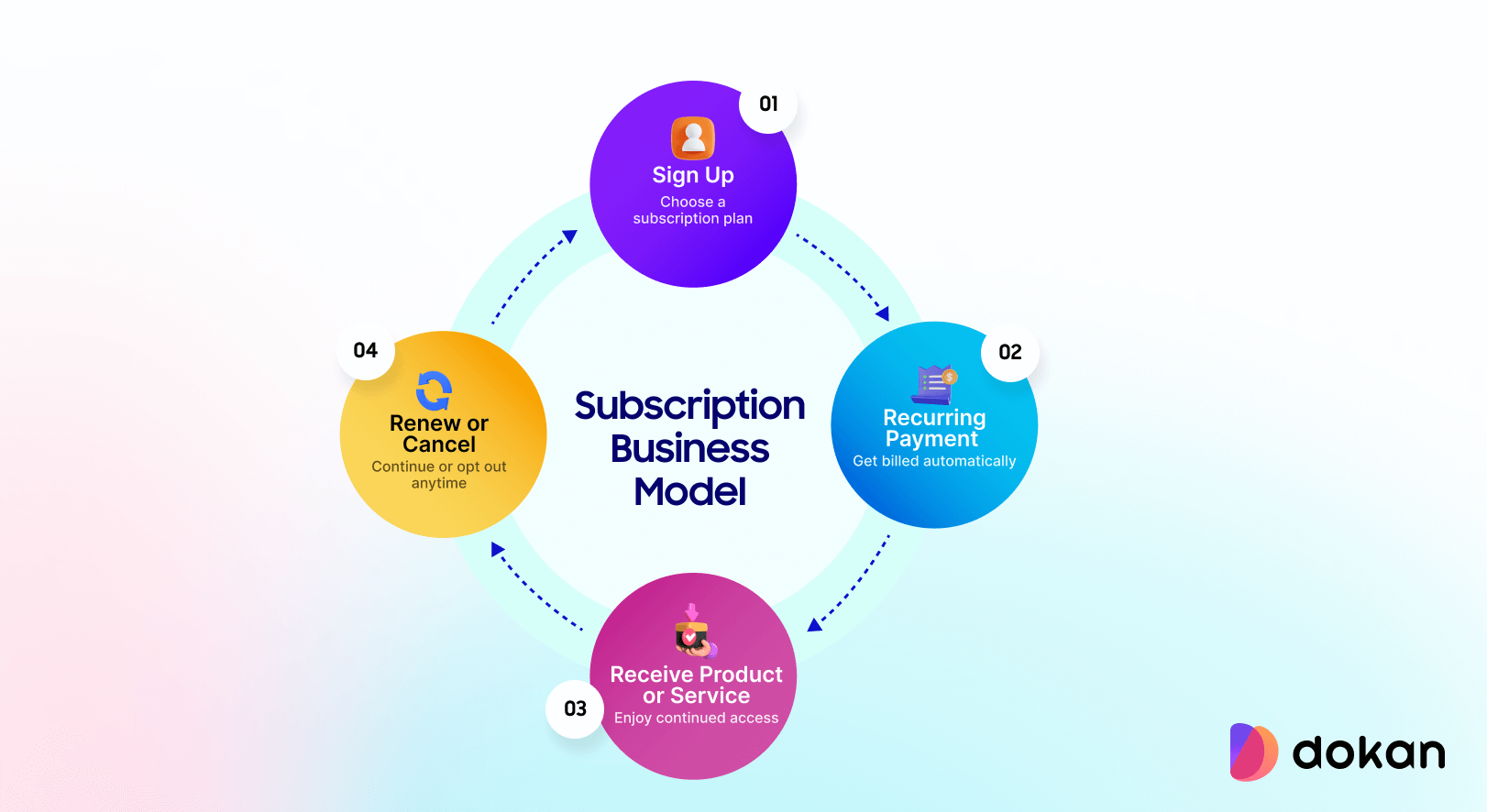
This model keeps customers engaged, ensures steady revenue, and helps businesses build long-term relationships with their audience.
What are the Advantages of a Subscription Based Business Model?
A subscription based business model offers several key advantages for both businesses and customers. Let’s explore them in more detail:
(i) Predictable and Recurring Revenue
One of the main benefits of a subscription based business model is the consistent income it generates. Since customers pay on a regular basis, businesses can forecast their earnings more accurately.
This financial stability makes it easier to plan and scale the business, as there is less reliance on unpredictable, one-time purchases.
(ii) Higher Customer Retention
A subscription model helps businesses build long-term relationships with their customers. Subscribers are more likely to stick around because they’re receiving continuous value from the service or product.
It results in lower churn rates and helps businesses focus on improving their offerings, rather than constantly chasing new customers.
(iii) Lower Marketing and Acquisition Costs
Acquiring new customers can be expensive, especially with traditional business models. However, with a subscription based model, businesses have an advantage.
Once a customer subscribes, they continue paying, meaning businesses spend less on acquiring new customers. It reduces the need for constant marketing campaigns and leads to lower overall acquisition costs.
(iv) Better Customer Experience
With a subscription based business, companies have the opportunity to build a strong, ongoing relationship with customers. This provides businesses the chance to personalize the customer experience, which can make them feel more connected to the brand.
(v) Opportunities for Upselling and Growth
Another key advantage is the ability to upsell existing customers. Since customers are already engaged and paying regularly, businesses can offer premium plans, exclusive features, or additional products to increase revenue.
Major Types of Subscription Based Business Model
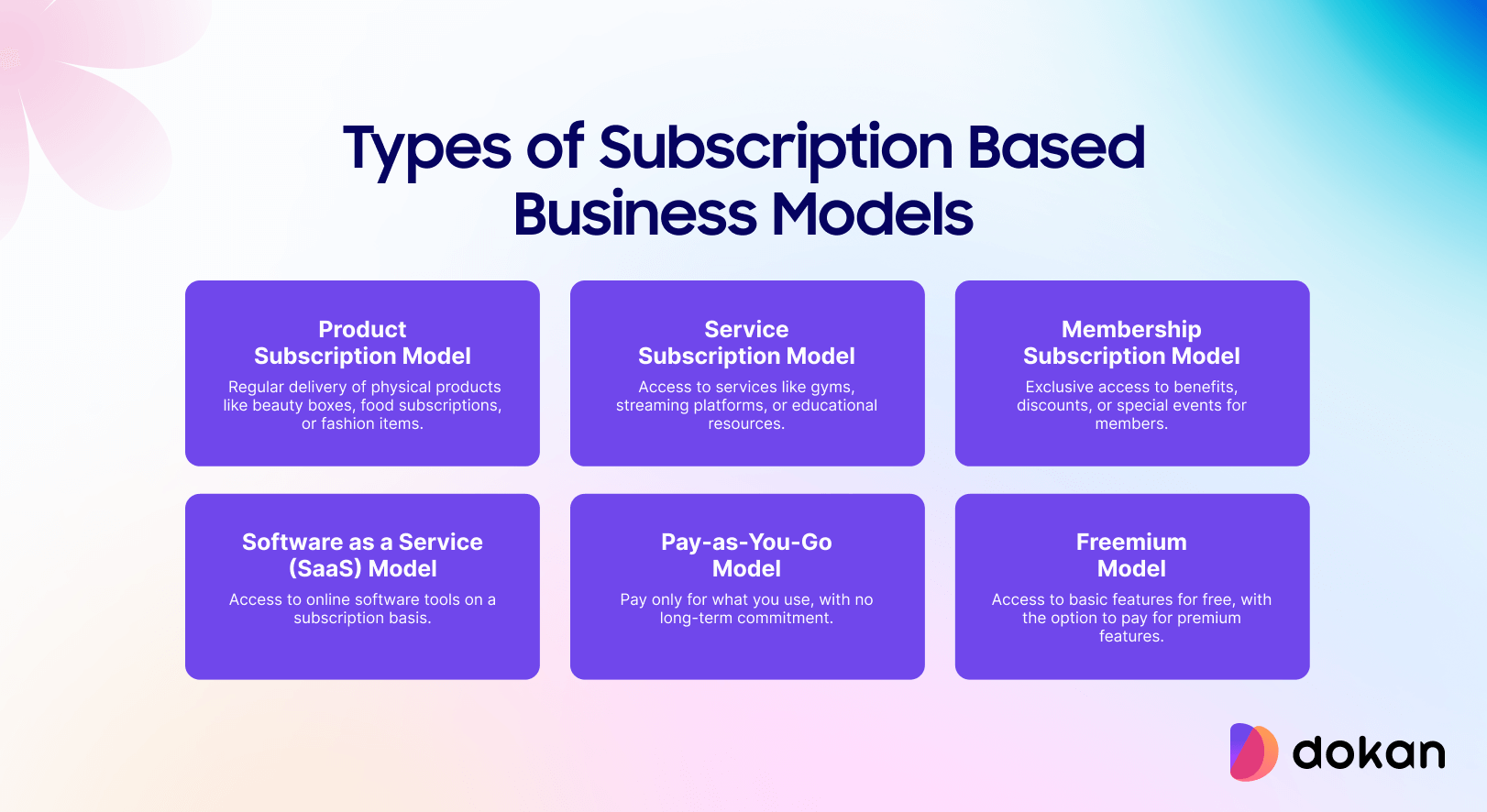
Subscription based business models come in different forms. Each type serves a specific purpose and fits a particular market need. Here are the major types of subscription models that businesses use:
01. Product Subscription Model
This model delivers physical products to customers regularly, usually every month or a few months. Businesses in this model send customers a selection of products based on their interests, such as beauty products, snacks, or clothing.
Pros of Product Subscription Model
- Steady Income: Regular payments from customers provide predictable revenue for the business.
- Customer Loyalty: The ongoing nature of the subscription helps build lasting relationships with customers.
- Convenient for Customers: Subscribers get products delivered to their door without needing to reorder.
- Personalized: Products can be chosen based on the customer’s preferences which adds a personal touch.
Cons of Product Subscription Model
- High Customer Acquisition Costs: Attracting new customers can be costly, especially if the business requires significant marketing or discounts.
- Inventory Management: Managing stock for regular shipments can be challenging, especially for businesses with varying demand or seasonal fluctuations.
02. Service Subscription Model
This model offers ongoing access to services for a recurring fee. It’s commonly used in industries like entertainment (e.g., Netflix), fitness (e.g., gyms), and digital services (e.g., cloud storage or project management tools).
Customers pay regularly to access these services, and they can typically cancel or upgrade their plans as needed.
Pros of Service Subscription Model
- Predictable Revenue: Similar to product subscriptions, this model generates steady income from recurring payments, which is great for business stability.
- Scalable: Businesses can easily scale by adding more customers or offering tiered pricing plans with extra features.
- Customer Retention: As long as the service is good, customers are likely to stay subscribed.
- No Inventory Hassles: Since the service is digital or intangible, there’s no need to worry about physical stock or logistics.
Cons of Service Subscription Model
- High Competition: Many businesses in this space, especially in digital services, face fierce competition. Standing out and keeping customers engaged can be challenging.
- Customer Expectations: If the service quality drops, customers may cancel their subscription quickly.
03. Membership Subscription Model
With this model, you pay a regular fee to access exclusive perks. Think of gym memberships, special clubs, or online communities. As a member, you get things like discounts, special events, or other cool benefits.
Pros of Membership Subscription Model
- Reliable Income: Regular payments mean steady cash flow for your business.
- Exclusive Perks: People feel valued when they get special treatment, and it keeps them coming back.
- Better Engagement: Members are more likely to stay involved if there’s always something new or exciting to look forward to.
- Flexible: You can create different membership levels or perks to appeal to different types of customers.
Pros of Membership Subscription Model
- High Expectations: Members expect to get real value, so you’ve got to stay on top of things.
- Attracting New Members: It’s not always easy to get people to join, especially if there are other similar offers.
04. Software as a Service (SaaS) Model
In this model, you offer software that people can use online by paying a subscription fee. Some of the popular examples are tools for managing projects, designing, or communicating. Your users don’t need to install anything, they can easily access it through the web.
Pros of Software as a Service Model
- Scalable: As your customer base grows, you don’t need to add much extra work. Plus, software updates are super easy.
- Steady Revenue: Subscriptions bring in consistent payments, so you can rely on that money each month.
- Low Costs: No physical products to manage, and you don’t have to worry about shipping anything.
- Customer Loyalty: If the software works well, users are likely to stick around for the long run.
Pros of Software as a Service Model
- Tech Problems: If there’s a glitch or the software stops working, users might get frustrated and leave.
- Security Risks: With customer data online, you’ve got to make sure everything is locked down tight to avoid security issues.
- Competition: The SaaS world is crowded, so it can be tough to stand out and keep customers coming back.
05. Pay-as-You-Go Model
With this model, customers only pay for what they use. No subscription fees or long-term commitments. For example, think of pay-as-you-go mobile plans, where you buy minutes or data as you need them. It’s all about flexibility.
Pros of Service Subscription Model
- Flexible for Customers: They only pay when they use the service, so it’s ideal for people who don’t need it all the time.
- No Commitment: Since there’s no recurring charge, customers aren’t locked in, and they can opt out whenever.
- Perfect for Low-Use Products: If customers use your service infrequently, this model suits them well.
- Easy to Understand: There’s no confusion. Customers pay for what they consume, and that’s it.
Pros of Service Subscription Model
- Unpredictable Income: Since payments are based on usage, it can be harder to predict steady revenue.
- Inconsistent Customer Engagement: If customers don’t use your service often, it might be hard to keep them engaged and loyal.
06. Freemium Model
This model offers basic services for free, but customers pay for premium features or upgrades. Popular in apps or online tools, where you get access to the basics without paying, but if you want more advanced features, you have to upgrade.
Pros of Service Subscription Model
- Attracts Lots of Users: The free offer draws in people who might not have paid otherwise.
- Easy to Upsell: Once customers are hooked on the free version, it’s easier to convince them to pay for advanced features.
- Builds Trust: People get to try before they buy, so they’re more likely to trust your product.
- Widely Accepted: Customers love free stuff, and this model can build a loyal base quickly.
Pros of Service Subscription Model
- Conversion Challenges: Not all free users will upgrade to the paid version, so turning them into paying customers can be tough.
- Cost of Free Service: Offering free services can be expensive to maintain, especially if there’s a large number of users.
Subscription Based Business Model Examples
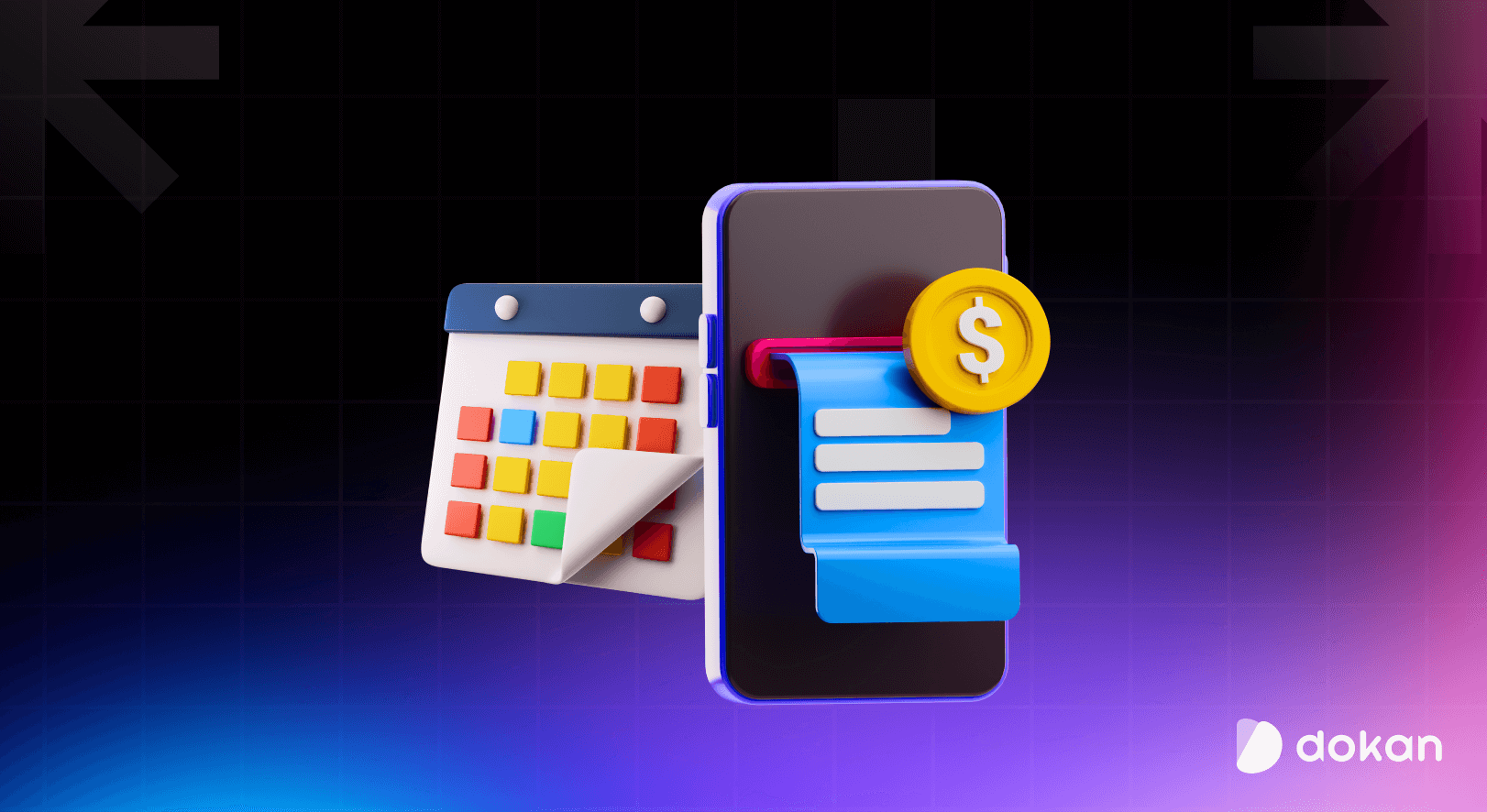
Many successful businesses use the subscription based model to generate steady revenue and keep customers engaged.
In this section, we are to going to show you a few very popular subscription based business model examples:
a) Netflix (Streaming Service)
Netflix offers unlimited access to movies and TV shows for a monthly fee. Customers can watch as much as they want without extra charges. This model works because it provides continuous value, encouraging long-term subscriptions.
b) Amazon Prime (Membership Subscription)
Amazon Prime charges an annual or monthly fee in exchange for benefits like free shipping, exclusive discounts, and access to streaming content. The mix of perks keeps customers loyal and encourages repeat purchases.
c) Spotify (Freemium Model)
Spotify offers free music streaming with ads. However, users can upgrade to a premium plan for ad-free listening, offline downloads, and better audio quality. The free version attracts users, while the premium version brings in revenue.
d) Dollar Shave Club (Product Subscription)
Dollar Shave Club delivers razors and grooming products to customers every month. Subscribers do not need to buy razors from a store because they receive them on a regular schedule. This way, they always have fresh supplies without worrying about running out.
e) Dokan Cloud (SaaS Model)
Dokan Cloud offers a subscription based solution for creating and managing single stores and multivendor marketplaces. Users pay a monthly or yearly fee to access its features, including store management, commission settings, and automated updates.
6. Peloton (Service Subscription)
Peloton sells exercise bikes, but its real business comes from its monthly subscription for live and on-demand workout classes. The subscription keeps users engaged long after they buy the equipment.
Common Challenges of a Subscription Based Business Model and How to Overcome Them
A subscription based business model offers steady revenue and strong customer retention. However, it also comes with challenges. Here are some common issues businesses face and how to solve them.
1. High Customer Churn
Many customers sign up but cancel after a short time. This can hurt revenue and make it hard to grow.
How to Overcome It:
- Offer a strong onboarding experience so new customers see value quickly.
- Send reminders about features and benefits through emails or notifications.
- Provide discounts or exclusive perks for long-term subscribers.
2. Subscription Fatigue
People get tired of managing too many subscriptions. They might cancel yours to cut costs.
How to Overcome It:
- Offer flexible plans, such as pausing a subscription instead of canceling.
- Add more value through exclusive content, discounts, or special offers.
- Keep pricing competitive and justify the cost with high-quality service.
3. Difficulty in Acquiring New Customers
It can be tough to convince people to subscribe, especially with so many options available.
How to Overcome It:
- Use free trials or limited-time offers to let users experience the service first.
- Create engaging content and testimonials to build trust.
- Make the sign-up process simple and transparent.
4. Keeping Customers Engaged Long-Term
If customers stop using the service, they are more likely to cancel.
How to Overcome It:
- Regularly introduce new features, products, or updates.
- Send personalized recommendations based on user preferences.
- Engage with customers through emails, social media, or loyalty rewards.

Do You Have Further Query?
A subscription based business model can be a great way to build steady revenue and long-term customer relationships.
It offers many advantages, but success depends on choosing the right approach, keeping customers engaged, and overcoming common challenges.
If you are thinking about starting your own subscription business, check our blog post on creating a subscription business using Dokan plugin.
Have questions or need more guidance? Drop your queries in the comments, and let’s discuss how you can make your subscription business successful!
Subscribe to
Dokan blog
We send weekly newsletters, no spam for sure!

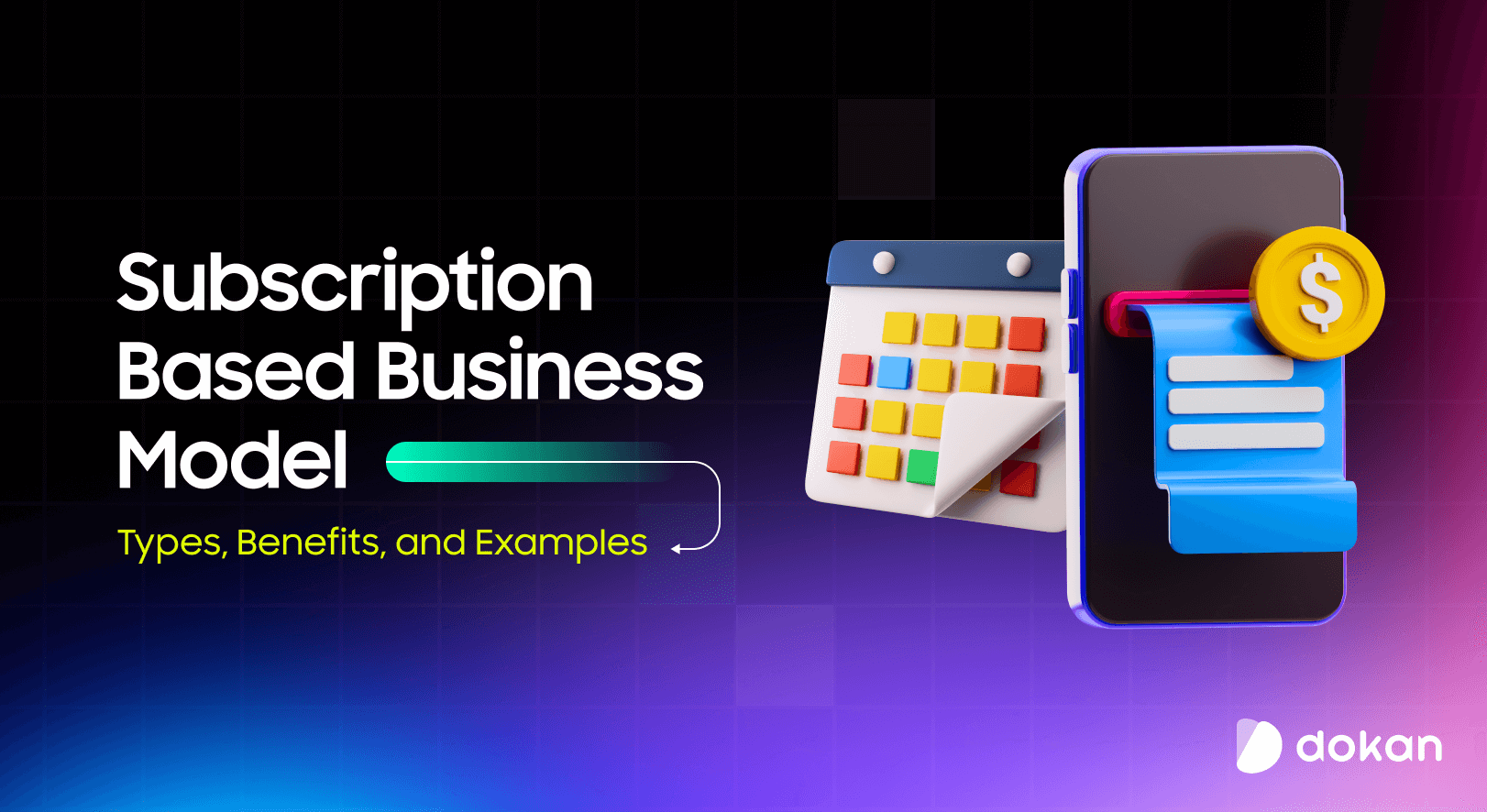
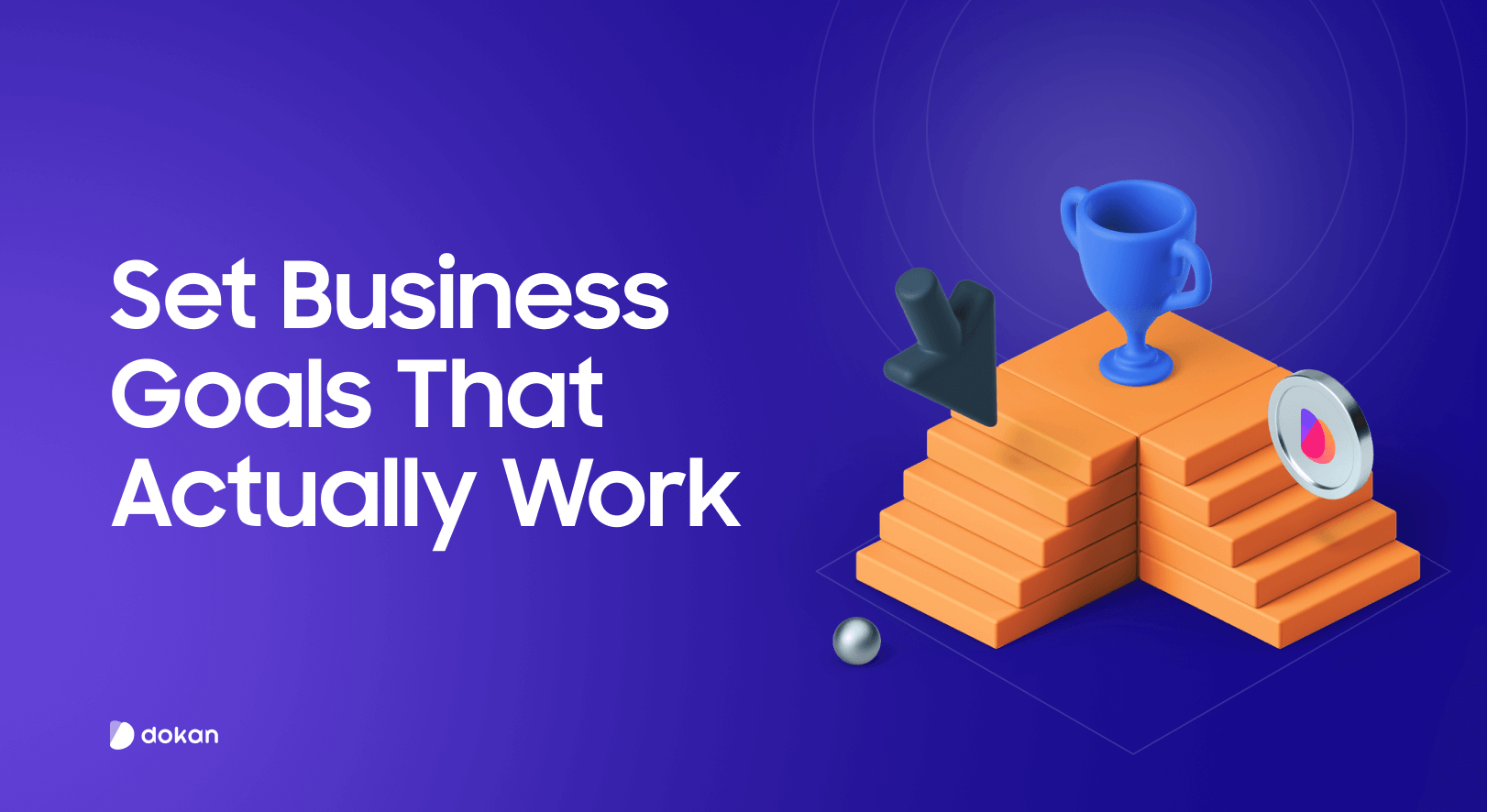
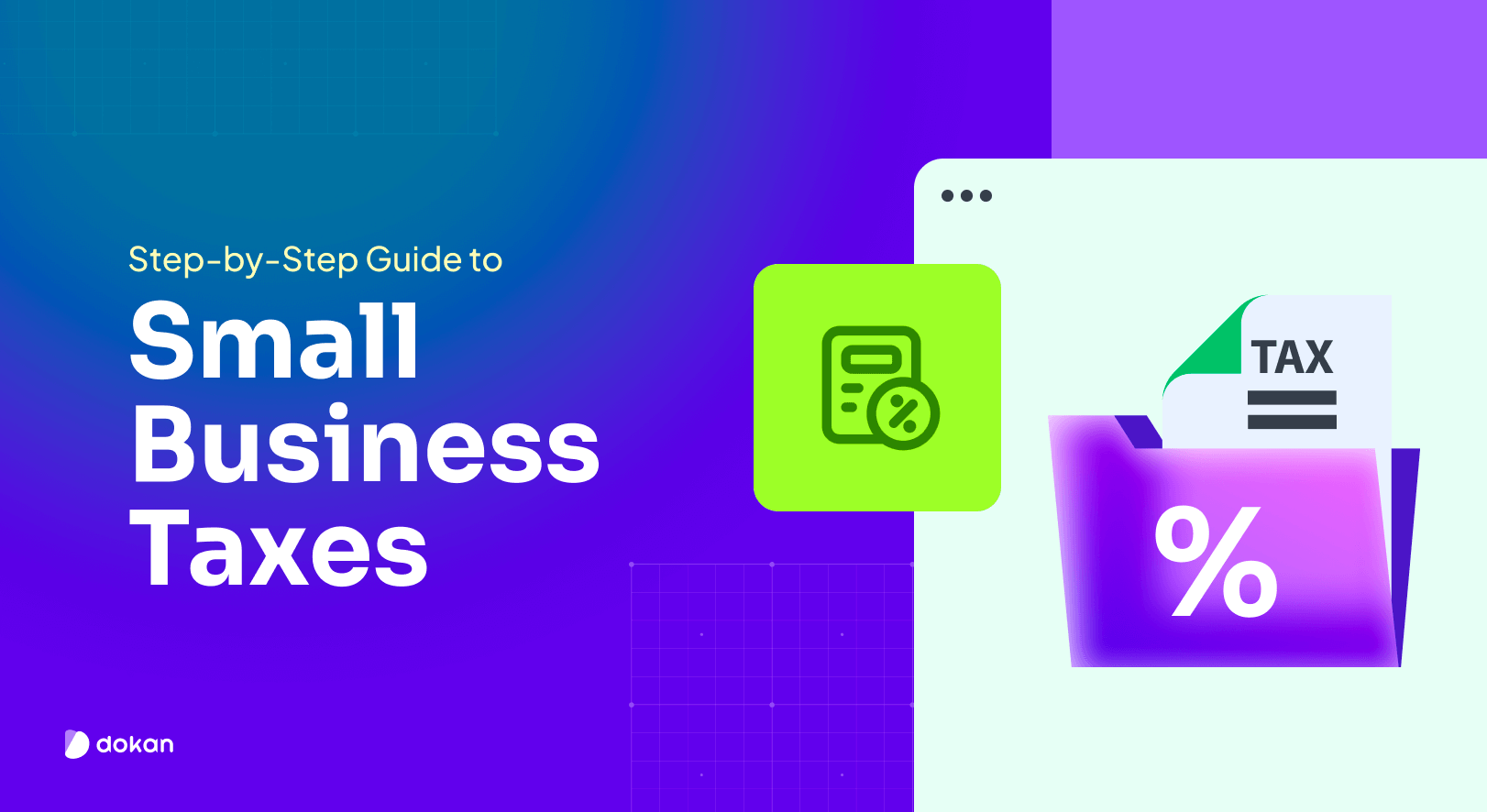
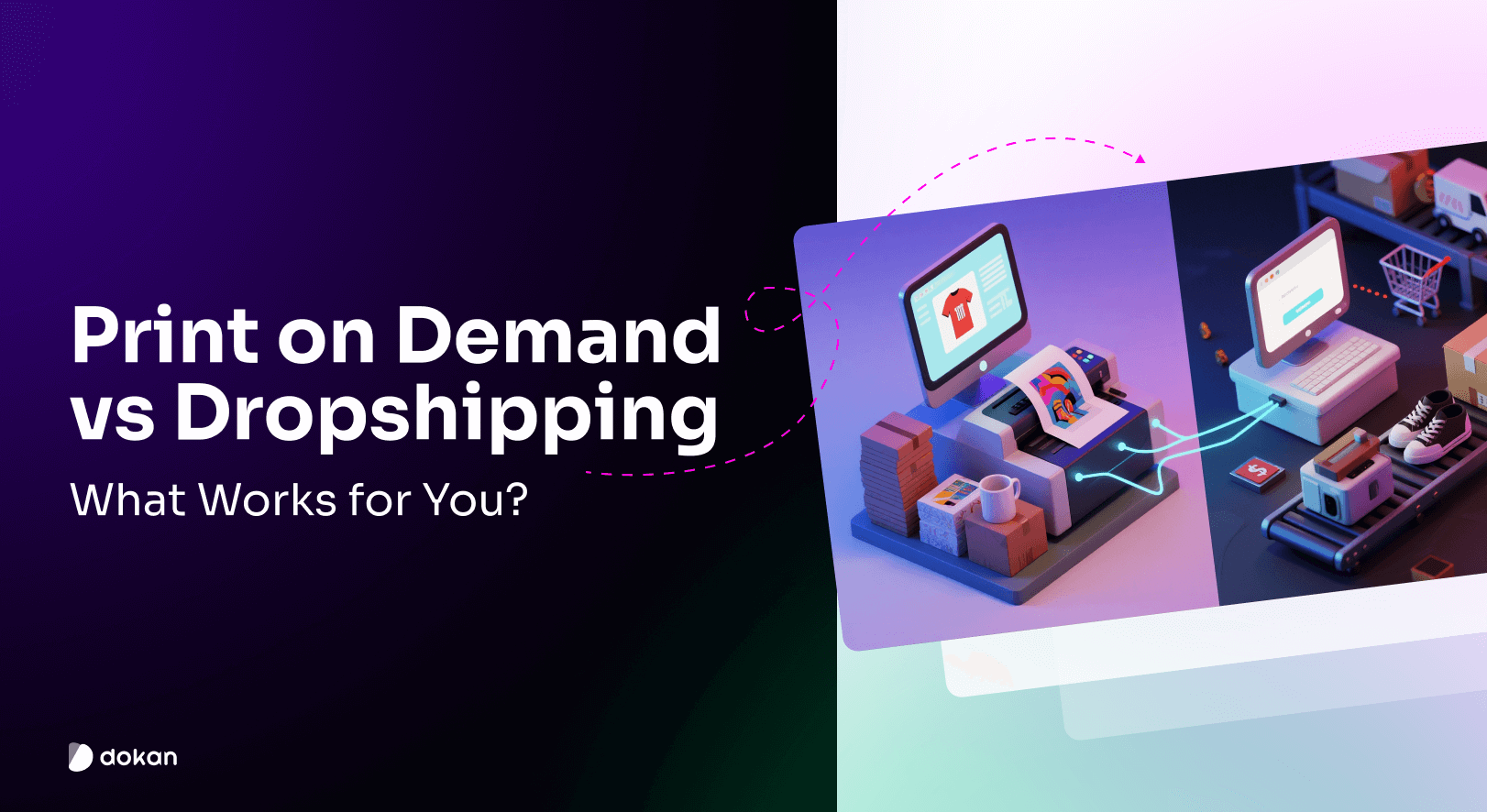
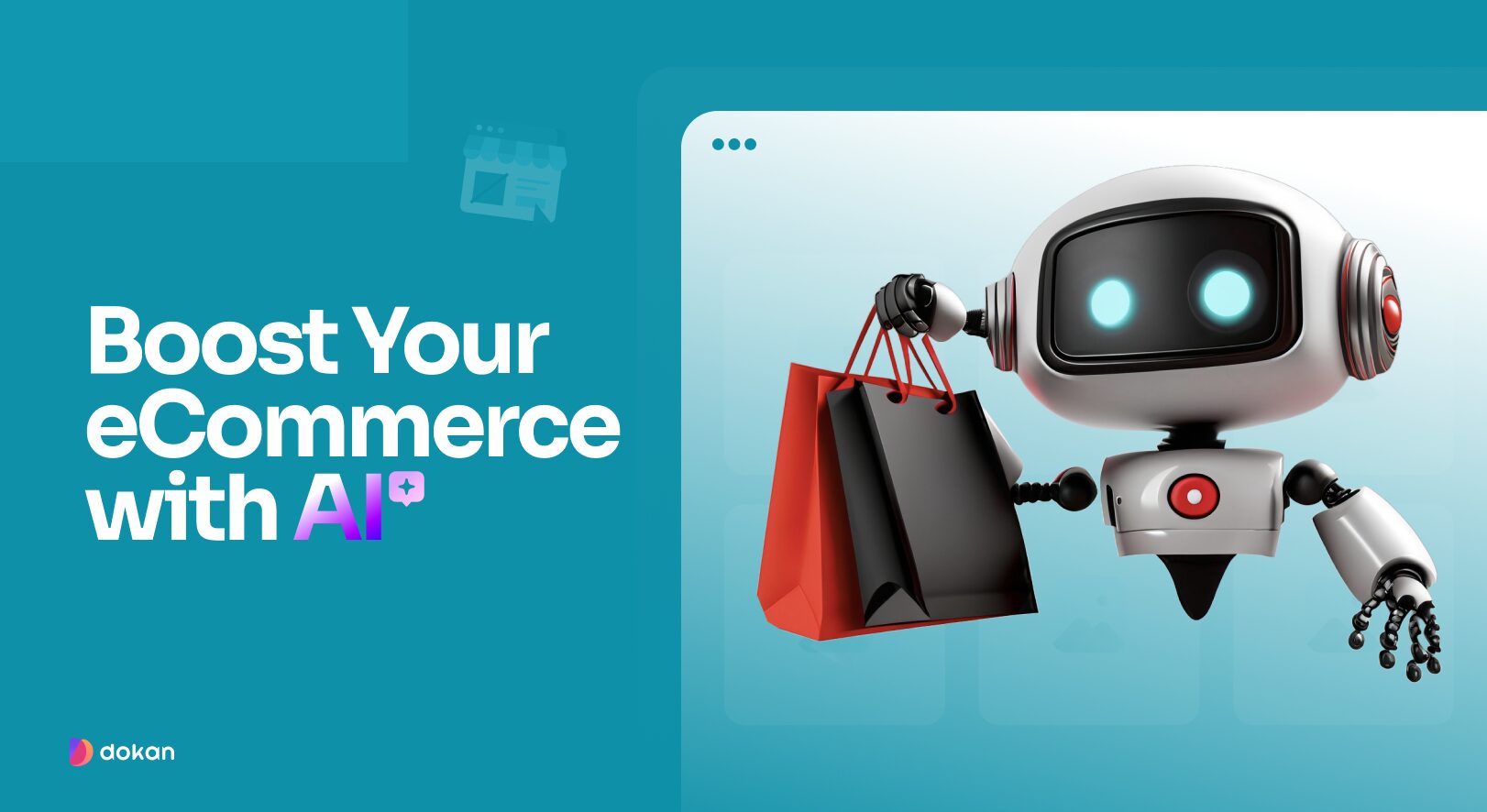

Leave a Reply